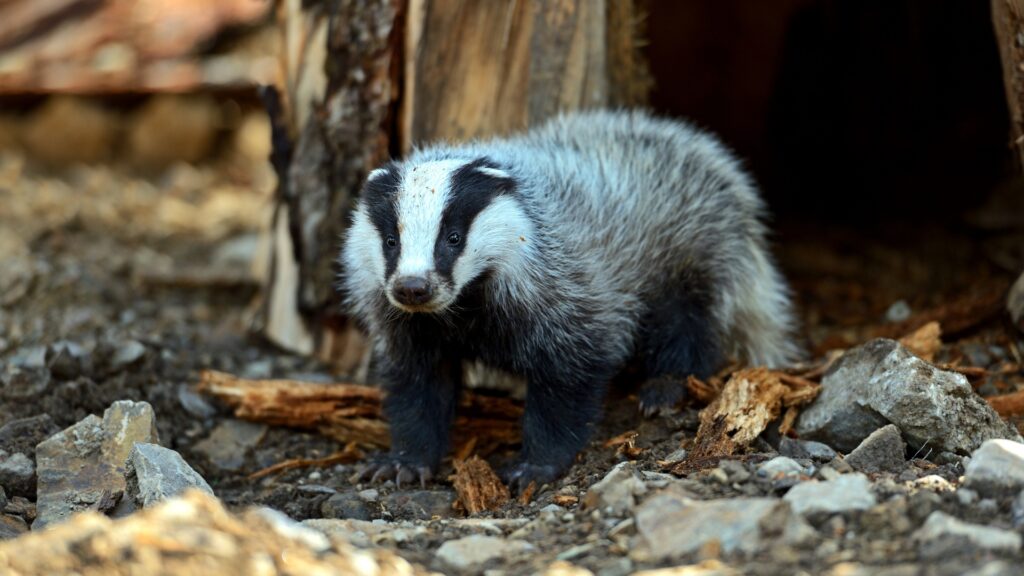The honey badger has earned its reputation as the most fearless animal in the world, a title recognized by the Guinness Book of World Records. This small but mighty creature is known for its astonishing bravery and tenacity, often taking on much larger predators like lions and hyenas without hesitation.
Contents
- 1 Why is the Honey Badger Considered Fearless?
- 2 Habitat and Distribution
- 3 Diet and Behavior
- 4 Conservation Status
- 5 Conclusion
- 6 Faq
- 6.1 What animal is considered the most fearless in the world?
- 6.2 Why is the honey badger known for its fearlessness?
- 6.3 Are there other animals considered fearless besides the honey badger?
- 6.4 Can a fearless animal still be harmed by predators?
- 6.5 How do fearless animals benefit from their bold behavior?
- 6.6 Do fearless animals have natural enemies?
- 6.7 Are fearless animals more aggressive than other species?
- 6.8 Is being fearless the same as being the strongest animal?
- 6.9 Can fearless animals be domesticated?
- 6.10 How do fearless animals influence the ecosystem?
Why is the Honey Badger Considered Fearless?
1. Aggressive Nature:
Honey badgers are notorious for their aggressive behavior. They don’t shy away from confrontation, even when faced with animals much larger than themselves. This fearless attitude allows them to fend off predators that would typically intimidate other species.
2. Physical Attributes:
Equipped with sharp claws and strong jaws, honey badgers are well-adapted for both offense and defense. Their thick skin provides protection against bites and scratches, making them formidable opponents in the wild.
3. Remarkable Stories:
Numerous accounts highlight their bravery. For example, videos have surfaced showing honey badgers successfully defending themselves against a pride of lions, showcasing their fearlessness in action. These instances have contributed to their image as the most fearless animal in the world.
Habitat and Distribution

Honey badgers are primarily found across sub-Saharan Africa, Saudi Arabia, Iran, and parts of Western Asia. They thrive in various environments, including arid grasslands, savannahs, and rainforests. Their adaptability to different habitats further emphasizes their resilience.
Diet and Behavior
These omnivorous creatures have a diverse diet that includes small mammals, birds, reptiles, insects, and even fruits. Their foraging habits often lead them to be seen raiding beehives, which is how they got their name. Honey badgers display remarkable intelligence and problem-solving skills while hunting or escaping threats.
Conservation Status
Despite their fierce reputation, honey badgers face threats from habitat loss and human activities such as trapping and poisoning. While they are currently listed as “Least Concern” by the International Union for Conservation of Nature (IUCN), conservation efforts are crucial to ensure their survival in the wild.
Conclusion
In summary, the honey badger’s combination of aggressive behavior, physical prowess, and adaptability solidifies its status as the most fearless animal in the world. With ongoing conservation efforts and increased awareness about their ecological role, we can hope to see these remarkable creatures continue to thrive in their natural habitats. Whether it’s taking on lions or defending its territory against larger foes, the honey badger exemplifies what it means to be truly fearless in the animal kingdom.
Faq
What animal is considered the most fearless in the world?
The honey badger is often considered the most fearless animal in the world due to its aggressive nature, willingness to take on larger predators, and ability to survive dangerous encounters.
Why is the honey badger known for its fearlessness?
Honey badgers are known for their tough skin, sharp claws, and bold attitude. They will attack much larger animals, such as lions or snakes, and are even capable of surviving venomous snake bites.
Are there other animals considered fearless besides the honey badger?
Yes, animals like wolverines, Tasmanian devils, and African buffalo are also known for their fearless behavior when confronted with threats.
Can a fearless animal still be harmed by predators?
While fearless animals like the honey badger can fend off many attacks, they are not invincible. They rely on their toughness, speed, and aggression to survive dangerous situations.
How do fearless animals benefit from their bold behavior?
Fearless animals often gain an advantage by scaring off predators, protecting their territory, and accessing food that more cautious animals might avoid.
Do fearless animals have natural enemies?
Even fearless animals have natural enemies. For example, honey badgers may face threats from lions, leopards, or humans, but their boldness often helps them avoid or escape harm.
Are fearless animals more aggressive than other species?
Yes, many fearless animals are known for their aggressive nature, which helps them defend themselves and their territory. This aggression is often a key to their survival in the wild.
Is being fearless the same as being the strongest animal?
No, fearlessness doesn’t necessarily mean the animal is the strongest. It refers to the animal’s bravery and willingness to face threats, even when it may be physically outmatched.
Can fearless animals be domesticated?
Some fearless animals, like dogs or certain wild cats, have been domesticated over time. However, most fearless animals, like honey badgers, are too aggressive and unpredictable to be tamed easily.
How do fearless animals influence the ecosystem?
Fearless animals play a critical role in the ecosystem by controlling prey populations, defending territory, and sometimes even taking on apex predators, helping to maintain balance in their environment.
